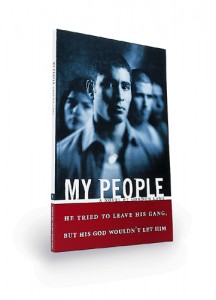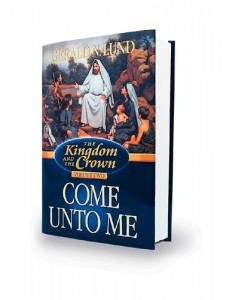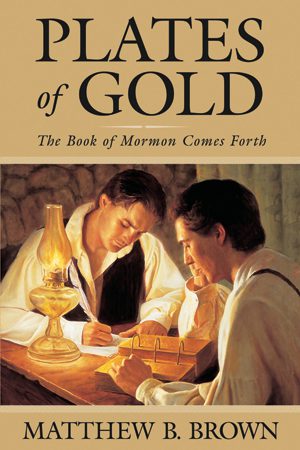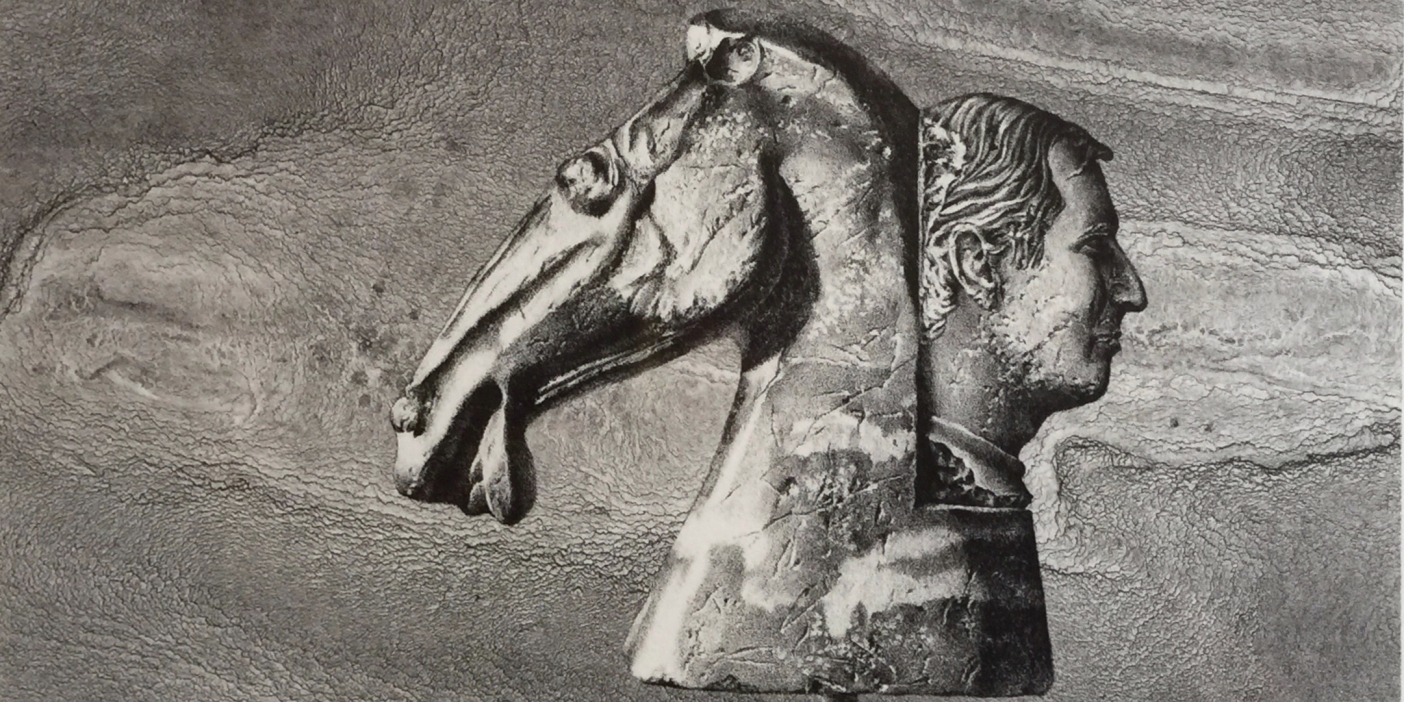By Richard H. Cracroft, ‘63
Recent literary and cinematic additions portray and perform missionary work.
Like thousands of other Latter-day Saints, I date my life from the time I spent on my mission (Swiss-Austrian Mission, 1956–59). My mission became my personal, customized Liahona, opening my eyes fully to the rich and wonderful plan of salvation and to the reality of the hand of God in my—and everyone’s—life. My mission fixed my course on eternity by clarifying my mortal purposes, spiritualizing my perspective, and focusing my mortal ministry. The painful yet vital crucible of the mission experience made all the difference.
The mission field gives the Latter-day Saint missionary what Brigham Young called necessary and refining “hard times.” He said of Utah Territory, which nobody else wanted, “This is a good place to make Saints” (in Journal of Discourses, 4:32). Likewise, the mission field is “a good place to make Saints.” I—and tens of thousands of Latter-day Saints—thank the Lord for the Saint-making missionary crucible. So it is to be expected that some of the great literature of the Latter-day Saints will emerge from missionary work—the vehicle of conversion for both preacher and hearer. The classic missionary account of Elder John H. Groberg, ’58, a member of the First Quorum of the Seventy, In the Eye of the Storm (Salt Lake City: Bookcraft, 1993; 303 pp.; $16.95; paperback edition titled The Other Side of Heaven [Salt Lake City: Deseret Book, 2001; 303 pp.; $14.95]), is now an acclaimed motion picture, The Other Side of Heaven. Richard A. Dutcher, ’88, in his gritty, remarkable film rendering of conversion and missionary experience, God’s Army, has brought tears of joy and self-recognition to thousands of Latter-day and Someday Saints. Now, under the same title, comes the moving and meaningful novelization of the Dutcher film (Salt Lake City: Excel, 2001; 224 pp.; $14.95) by Geoffrey Card. In crisp and powerful language that recalls the storytelling craftsmanship of his father, Orson Scott Card, ’75, Geoffrey Card captures the rapid transitions from the grainy abrasiveness of daily life to the exhilarating and rewarding moments of spiritual discovery and transcendence that make up the Mormon missionary experience. Compacted into a few life-changing days is the story of Elder Brandon Allen, who learns from the inspiring, inimitable mentor, Elder Marcus Dalton. This fine novel captures the difficult and wonderful, soul-harrowing and soul-transforming journey to the pure love of Christ that a mission can be.
So it is to be expected that some of the great literature of the Latter-day Saints will emerge from missionary work—the vehicle of conversion for both preacher and hearer. The classic missionary account of Elder John H. Groberg, ’58, a member of the First Quorum of the Seventy, In the Eye of the Storm (Salt Lake City: Bookcraft, 1993; 303 pp.; $16.95; paperback edition titled The Other Side of Heaven [Salt Lake City: Deseret Book, 2001; 303 pp.; $14.95]), is now an acclaimed motion picture, The Other Side of Heaven. Richard A. Dutcher, ’88, in his gritty, remarkable film rendering of conversion and missionary experience, God’s Army, has brought tears of joy and self-recognition to thousands of Latter-day and Someday Saints. Now, under the same title, comes the moving and meaningful novelization of the Dutcher film (Salt Lake City: Excel, 2001; 224 pp.; $14.95) by Geoffrey Card. In crisp and powerful language that recalls the storytelling craftsmanship of his father, Orson Scott Card, ’75, Geoffrey Card captures the rapid transitions from the grainy abrasiveness of daily life to the exhilarating and rewarding moments of spiritual discovery and transcendence that make up the Mormon missionary experience. Compacted into a few life-changing days is the story of Elder Brandon Allen, who learns from the inspiring, inimitable mentor, Elder Marcus Dalton. This fine novel captures the difficult and wonderful, soul-harrowing and soul-transforming journey to the pure love of Christ that a mission can be.
With My People (Provo: Lifesong, 2001; 107 pp.; $10.95) Gordon D. Laws Jr., ’00, inaugurates Lifesong’s new series of short, vivid novellas intended for ready translation into film. Ruben Velásquez, a young gang leader in East LA, is mourning for his brother Luis, a recent convert to the Church of Jesus Christ and, more recently, the victim of gang warfare. Ruben is torn among the allure of the world in which he has grown up, his love for Maria, his desire to become a Latter-day Saint like his brother and the admired missionaries who baptize him, his loyalty to his friend Juan, and his innate need to break the shackles of gang life and rise to a promising new life. In tight and telling prose, Laws embodies in Ruben the tensions at the heart of the missionary effort. So Ruben fights, in the darkened backstreets of LA, the old battle of the soul. His story becomes one of overcoming, of hope dawning after a nightlong struggle. Laws’ novella is a ray of light in contemporary Mormon fiction, a work that is at once probing and mature, literarily sophisticated yet gospel principled.
Four recent missionary preparation books have caught the eye of this old mission president. (I returned to my mission field 30 years later.) Marcus Sheridan’s Heavenly Father’s Angels: The Ultimate Missionary Guide (Springville, Utah: Cedar Fort, 2001; 191 pp.; $12.95) is an engaging, readable, and convincing personal approach to missionary life by a convert to the Church. All I Ever Needed to Know I Learned on My Mission (Springville, Utah: Cedar Fort, 2001; 94 pp.; $10.95), by Jeffrey G. Skousen, ’82, approaches missionary work by telling of 11 invaluable lessons the author learned on his mission and outlining three important things priesthood leaders want missionaries to learn before and during their missions. The Missionary’s Little Book of Teaching Tools (American Fork, Utah: Covenant Communications, 2001; 249 pp.; $9.95), by R. Dale Jeffery, ’91, and V. Ruth Wilcox Jeffery, ’91, is a handbook of useful teaching aids, ideas, and object lessons for enhancing the missionary discussions. Ed J. Pinegar’s The Ultimate Missionary Companion (American Fork, Utah: Covenant Communications, 2001; 178 pp.; $11.95) is an inspirational read. Pinegar, a former mission president and former president of the Provo MTC, discusses such topics as “Having a great day on your mission,” communicating, teaching the discussions, teaching by the Spirit, and getting commitments.
I suppose the LDS historical novel is a subtle form of proclaiming the gospel. Dean Hughes, author of the Children of the Promise series about the adventures of the Al and Bea Thomas family during World War II, now tells, in The Writing on the Wall (Salt Lake City: Bookcraft, 2001; 489 pp.; $22.95), the stories of the Thomas grandchildren—Latter-day Saints who come of age and fulfill missions in the 1960s. Hughes vividly shows how it was to be a Latter-day Saint in Salt Lake City and Ogden, Utah, and Schwerin, East Germany, at the time of the rise of the Berlin Wall, the assassination of JFK, and the Civil Rights movement. Hughes captures how it was to serve a mission in Germany a decade or so following WWII and how it was for a member of the Church of Jesus Christ to live behind the Iron Curtain. I found this first novel in Hughes’s new Hearts of the Children series every bit as exciting as his WWII novels, and I suspect you also will. Gerald N. Lund, ’65, has done it again, too—continuing his Kingdom and the Crown series with volume 2, Come unto Me (Salt Lake City: Shadow Mountain, 2001; 571 pp.; $26.95). Amidst the beautifully recounted events of Jesus’ Galilean ministry, Simeon, son of David ben Joseph of Capernaum, and Miriam, daughter of Mordechai ben Uzziel of Jerusalem, learn the high price of their newfound discipleship to Jesus of Nazareth. Lund skillfully brings to bear his training in Hebrew, Judaism, Middle-Eastern history, and cultural anthropology in weaving a spiritually moving tale amidst spellbinding political intrigue and betrayal in Roman-occupied Palestine. And Ronald G. Carter, ’57, brings General George Washington and his ragtag Continental Army to Valley Forge in A Cold, Bleak Hill (Salt Lake City: Bookcraft, 2001; 557 pp.; $22.95), volume 5 in his well-told, well-received, and historically well-grounded Prelude to Glory series. Nancy C. Allen, in Faith of Our Fathers: A House Divided(American Fork, Utah: Covenant Communications, 2001; 449 pp.; $22.95), begins a four-volume historical novel series on the Civil War. Allen introduces us to a family divided by the issues of abolition and slaveholding. Ben, the oldest son of the Southern branch of the family, is a Latter-day Saint convert who returns to his beloved South as a soldier in the Union cavalry. Finally, I must notice three lovely photo books—missionaries in their own right—that have lately graced my Postum table. Don Busath, in Temple Square in the Light of Its Seasons (Salt Lake City: Eagle Gate, 2001; 90 pp.; $21.95), presents a beautiful collection of more than 100 full-color portraits of the Salt Lake Temple and its lovely surrounding gardens and buildings, capturing the extended Temple Square in every season of the year. S. Michael Wilcox, in On Holy Ground (American Fork, Utah: Covenant Communications, 2001; 136 pp.; $29.95), takes us on a personal journey through ancient lands, interpreting the great stories from the Old Testament. His reflections are enhanced by the stunning photography of John W. Telford, ’71, W. Floyd Holdman Jr., ’94, and Don O. Thorpe, ’69. And in Beloved Savior: Images from the Life of Christ (Salt Lake City: Eagle Gate, 2001; 80 pp.; $19.95), Simon Dewey presents 20 paintings (with accompanying personal reflections) that capture tender and magnificent moments in the life and ministry of Jesus Christ.
Finally, I must notice three lovely photo books—missionaries in their own right—that have lately graced my Postum table. Don Busath, in Temple Square in the Light of Its Seasons (Salt Lake City: Eagle Gate, 2001; 90 pp.; $21.95), presents a beautiful collection of more than 100 full-color portraits of the Salt Lake Temple and its lovely surrounding gardens and buildings, capturing the extended Temple Square in every season of the year. S. Michael Wilcox, in On Holy Ground (American Fork, Utah: Covenant Communications, 2001; 136 pp.; $29.95), takes us on a personal journey through ancient lands, interpreting the great stories from the Old Testament. His reflections are enhanced by the stunning photography of John W. Telford, ’71, W. Floyd Holdman Jr., ’94, and Don O. Thorpe, ’69. And in Beloved Savior: Images from the Life of Christ (Salt Lake City: Eagle Gate, 2001; 80 pp.; $19.95), Simon Dewey presents 20 paintings (with accompanying personal reflections) that capture tender and magnificent moments in the life and ministry of Jesus Christ.
Richard H. Cracroft is a professor emeritus of English and former director of the Center for the Study of Christian Values in Literature.
FARMS REPORT
The Foundation for Ancient Research and Mormon Studies (FARMS), part of BYU’s Institute for the Study and Preservation of Ancient Texts, sponsors research about the Book of Mormon and other ancient scriptures. Below are some of their most recent offerings:
When the Lights Went Out, by Hugh W. Nibley, ’38 (2001, 149 pp., $9.95)
Three of Nibley’s classic essays on the early Christian Church—”The Passing of the Primitive Church,” “The Forty-Day Mission of Christ,” and “Christian Envy of the Temple,”—are brought together in a reprinting of When the Lights Went Out, first published in 1970.
Traditions About the Early Life of Abraham, comp. and ed. John A. Tvedtnes, ’68, Brian M. Hauglid, ’84, and John L. Gee, ’88 (2001, 608 pp., $49.95)
Traditions About the Early Life of Abraham, the first book in the Book of Abraham series, assembles more than 100 ancient and medieval stories about Abraham’s early life.
Visualizing Isaiah, by Donald W. Parry, ’84 (2001, 176 pp., $39.95)
Visualizing Isaiah uses photographs, charts, illustrations, and commentary to explain Isaiah’s vivid imagery and symbolism.









